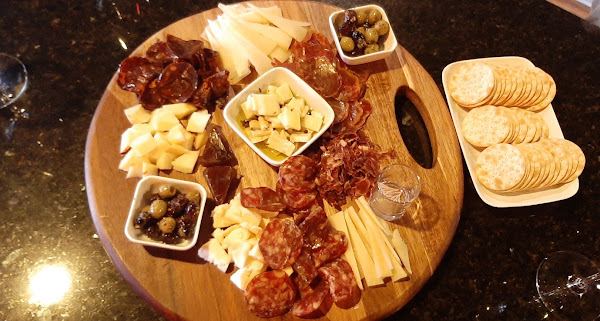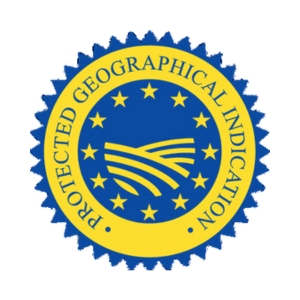Explore, Taste, and Learn with Expert Guidance
At La Vid, we don’t just sell wine – we bring the soul of the Iberian Peninsula to your glass. From robust reds to crisp whites, every bottle tells a story of heritage, craft, and passion. Join us in exploring the flavors of Spain and Portugal, where tradition meets innovation in every sip.
Come visit us and experience the world of Iberian wine at La Vid, where every bottle has a journey to share!
Rioja
Spain’s oldest Denomination of Origin, DO and Spain’s first Qualified Denomination of Origin DOCa. Rioja is a prestigious wine region of Spain and globally recognized.
The majority output is red; however, white, rosé and sparkling wines are also produced. Rioja is known for its aging practices, which they guarantee through their rigorous labeling requirements.
Tempranillo, Garnacaha, Mazuelo, and Graciano are the red varietals of the region while Viura and Garnacha blanca are the most prominent white varietals.
Priorat
Spain’s second DOCa. Specializing in blends based on Garnacha, Cariñena, and French varieties such as syrah and cabernet sauvignon. Renowned for their slate and quartz soils known in Catalan as “Llicorella.” Altitudes range from 985ft to 2,300ft above sea level. This region has built a reputation for its serious and long-lived wines.
Rías Baixas
A wine region in Galicia that primarily focuses on white wines from indigenous varieties, accounting for over 99% of the wine output. Fresh, clean, taste with citrus and stone fruit nuances. The region is subdivided into five subregions, each having its unique characteristics. Albariño is the star of the show here, followed by Godello and Loureiro and other local grapes.
Jerez/Xérès/Sherry
A legendary wine-producing area with a history spanning almost 3,000 years.
Located on the Strait of Gibraltar in Andalucia, Spain, the portal to Europe and North Africa.
Complex, unique wines are made from a fractional blending system known as a “solera.”
Ribera Del Duero
This wine region sits on the banks of the Duero River and is at the northern end of the “Meseta,”; Spain’s expansive plateau.
This wine region has come to prominence in the last 20 years and has built a reputation on serious, full-bodied reds with a unique structure allowing the wines for years to come.
Alentejo
Refers to the broader Vinho Regional Alentejo (Regional Wine) and the Alentejo DOC (Denominação de Origem Controlada) located within.
The region spans south-central Portugal, which is made of gentle slopes and hills. A significant output is low acid and high alcohol, easy-drinking wines. The majority of wines are based on local varieties and a portion of international types.
Douro
Portuguese name for the Duero River. The denomination of origin is the same as for Port wines; however, for still table wines, the wines are referenced as Douro DOC to avoid confusion.
Many grapes are allowed in this region. However, the three most important are Touriga Nacional, Touriga Franca, and Tinta Roriz.
Dão
This is a Portuguese DOC located in the northern area of Beira Alta, Central Portugal. It is the ancestral home of the Touriga Nacional Grape.
Over 75% of wine production is focused on dry red wines, other wines from the region can be white, rosé, and sparkling. These wines of the area are in high demand because of better viticultural practices and limited quantities.
Vinho Verde
This DOC is known for young and fresh wines hence the name Verde meaning “green.” This wine region has a wet maritime climate reminiscent of its neighbors in Galicia to the north while they board Port/Douro Region to the southeast. Wines produced here are lovely wines that are pleasantly light and crisp with hints of stone fruits and are usually bottled with a touch of effervescence. Alvarinho and Loureiro varieties are the leading varietals in the area.

Taste The Difference of Authentic Iberian Wine
Join Us
Whether you’re passionate about wine or just starting to explore, La Vid’s wine events offer the perfect opportunity to learn, taste, and experience the world of Iberian wines. Reserve your spot today and take the first step in your wine adventure!
Wine Classes
Our wine classes offer a hands-on, interactive approach to learning about wine. Each session includes a blind tasting, where you’ll analyze and identify wines using a deductive method. Helping you develop the skills needed to assess wines on your own, empowering you to trust your palate and make confident tasting conclusions.
Live Events
At La Vid, we believe that great wine pairs perfectly with great music. That’s why we offer live music events. Relax with a glass of your favorite wine, listen to local talent, and immerse yourself in the vibrant atmosphere of La Vid. As our events grow, more music nights will be added, so keep an eye out for exciting updates!
Wine Tastings
Tastings are a great way to explore different wines and regions, with details announced as the dates approach. Join us on the First Friday of every month for a special tasting event! It’s the perfect way to unwind at the end of the week, discover new favorites, and connect with fellow wine lovers.
The La Vid Experience: In Their Words
This local wine shop is a true gem, conveniently located near our home. The selection of wines is excellent, and their charcuterie offerings pair perfectly with the drinks. The ambiance is cozy and inviting, making it a great spot to relax and enjoy a glass. The owner, who is also a sommelier, has an amazing personality and really enhances the experience with his expertise and welcoming nature. The service is consistently top-notch. Highly recommend for both wine lovers and those looking to unwind in a great atmosphere!
We were there for a tasting. The owner’s knowledge and charisma are awesome. Food is mainly charcuterie type and very fresh, delicious meats and cheeses. Spanish wines are the main theme. Hidden gem.
Mom and son run joint that understands the old world of service and how to curate an amazing wine experience. Great knowledge and passion. I enjoyed their selections of vermouth during my first visit. Thank you for what you do!
La Vid is a gem not only for the Carrollwood neighborhood, but for all of Tampa. There are no other wine bars in the area focusing on Spanish and Portuguese wines, and La Vid has a great selection for you to discover. It’s not just a wine bar with really nice wines by the glass, but you can also choose from a wide array of wines available by the bottle as well as specialty Spanish and Portuguese foods such as olives, cheeses, tinned fish, and cured meats. Victor knows his wines, so make sure to ask for recommendations, especially if you’re curious about something new.
Our most favorite wine bar. The sommelier recommends the best and unique wines. We love the Portuguese and Spanish selections and have met some great new friends here. The olives and cheese selection are such a high quality. We feel like we are back in Europe when we are here. Highly recommend if you love Portugal and Spain.
A great place to chill out and relax !! La Vid Wine bar in Carrolwood is a great spot for a relaxing stop. Specializing in Spanish and Portuguese wines Victor and Rosa will expertly guide you through the large variety of offerings.
A family run business with a great host and very pleasant atmosphere. Along with the wine La Vid also has a fine selection of cheese and meats to compliment the wine.
Great place and easy to get to.
Love coming to this wine bar! Victor is the best. His knowledge of wine is incredible. My husband and I have been a few times now and it’s one of my favorite places to sit and relax. His playlist is always fun too!





